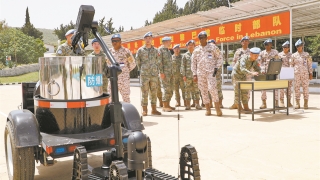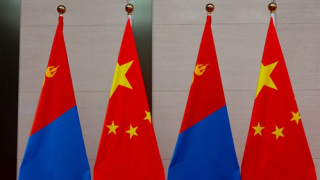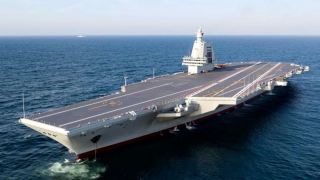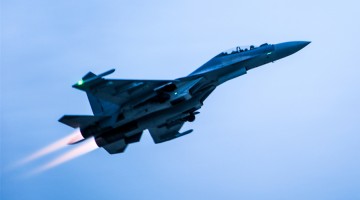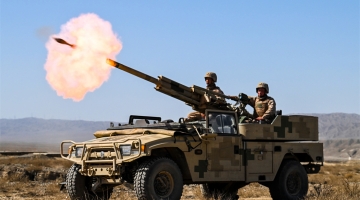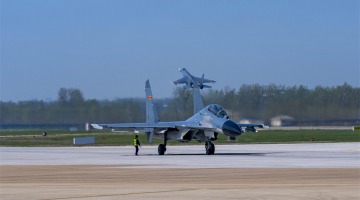By Wu Minwen
The US government released its second National Strategy for the Arctic Region on October 7, which listed four pillars that the US will work on in this region in the next ten years, namely Security, Climate Change and Environmental Protection, Sustainable Economic Development, and International Cooperation and Governance. Before that, the US Department of Defense (DoD) announced to form the Arctic Strategy and Global Resilience Office on September 27 and appointed a deputy assistant secretary of defense in charge of relevant work. Even earlier, NATO Secretary General Jens Stoltenberg paid his first visit to Canada’s Cambridge Bay in Nunavut, the North Pole on August 25.
These facts indicate that the US and NATO are hurrying to make deployments at the North Pole as Russia is still trapped in the conflict with Ukraine.
The Arctic region abounds in natural resources including petroleum, natural gas, and metal and non-metal mineral deposits. Although the environment at the North Pole and the Arctic Ocean is extremely harsh, the shipping line between Asia, Europe and America will be shortened by 6,000-8,000km if the Arctic route is open.
Meanwhile, the North Pole is also assuming growing military values. The airspace above the North Pole is the best path for intercontinental strategic ballistic missiles or strategic bombers, while satellites or reconnaissance planes are almost unable to detect the submarine and its activities under the ice sheet, largely improving the submarine’s stealth performance and viability.
Countries and regions adjoining the Arctic region include Denmark’s Greenland, north Canada, America’s Alaska, and some islands and territories of Russia, Norway, Sweden, Finland, and Iceland. America, therefore, calls itself an Arctic country because of Alaska’s proximity to the Arctic Ocean.
The White House issued the first National Strategy for the Arctic Region in May 2013, planning to build a permanent base in the region. In June 2019, the US DoD issued the Arctic Strategy, which set the strategic goal of protecting America’s national interests in the Arctic region in the era of “major country competition” and proposed ways to achieve that goal. On August 26, 2022, the Biden administration elevated the Coordinator for the Arctic region, a position set up during Trump’s time, to be the Arctic ambassador, giving much more importance to Arctic affairs in America’s policy making.
As most members of the Arctic Council are America’s NATO allies, achieving its Arctic strategy by borrowing NATO’s strength is the clever plan that the US has in mind. It has not only intensified the interactions with Norway, Canada and other NATO allies within the Arctic Council but also tried to bring NATO members outside the region, such as the UK, into the scramble, which fits right in London’s plan to enhance its global influence.
In fact, the troops that NATO has deployed in the Arctic region are mainly American. The American troops in the North Pole are commanded by the Alaska Command under the US Indo-Pacific Command, with about 11,600 army troops comprised of the 1st and the 4th brigade of the 25th infantry division stationed in Alaska. The American air force troops stationed in the North Pole are mainly comprised of the 11th aviation unit equipped with nearly 100 F-22 and F-35 fighter jets, which are expected to increase to 150 in the future. To fortify its Arctic deployments, the US Navy rebuilt the 2nd fleet in 2018 to be responsible for conducting combat missions across the Arctic circle, the Arctic Ocean, and along the coast.
The US and its NATO allies have normalized a series of joint military exercises in the Arctic region in recent years, such as the Cold Response, Arctic Edge, Polar Bear, Arctic Challenge, and Northern Edge. With the ever-larger scale and more participating troops, these exercises have become an important way to reinforce America and its NATO allies’ interoperability.
As Russia is busy dealing with the conflict with Ukraine, the US and NATO have found a golden opportunity to make inroads into the Arctic region. The US announced the reactivation of the 11th Airborne Division and revamped it into a force targeted at the Arctic region, and Stoltenberg visited the region for the first time – both when the Russia-Ukraine conflict is in a stalemate. The more advanced equipment and combat systems, forces with stronger combat capability, and more targeted military exercises are sure to aggravate the confrontation in the North Pole. At the same time, intensive military activities will also damage the ecology there, consume more resources needed by the local fauna and flora, and destroy their indigenous activities and trajectory of migration. That will lead to irrevocable and destructive ecological consequences.
(The author is from the College of Information and Communication, National University of Defense Technology)
Editor's note: Originally published on zqb.cyol.com, this article is translated from Chinese into English and edited by the China Military Online. The information and opinions in this article do not necessarily reflect the views of eng.chinamil.com.cn.

